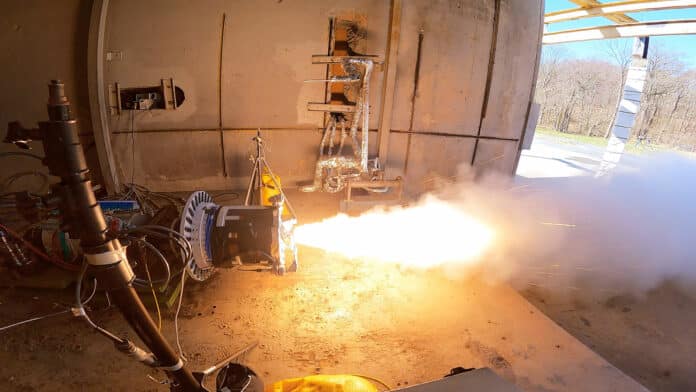NASA’s Mars Ascent Vehicle (MAV) recently reached some major milestones in support of the Mars Sample Return program. The Mars Ascent Vehicle is the first rocket design that will launch from the surface of another planet.
The team developing MAV has successfully tested the first and second-stage solid rocket motors that will be used to help return the first geological samples from Mars to Earth for laboratory analysis.
The Mars Sample Return mission has been underway for years. It is an ambitious campaign by NASA and ESA (European Space Agency) to collect samples from Mars and return them to Earth to search for signs of life on the Red Planet. The samples are currently being collected by NASA’s Mars Perseverance rover. These are sealed in special tubes and left in a well-identified place, or more than one spot, on the surface of Mars.
These sample tubes will be collected later by Perseverance. Two Ingenuity-like backup helicopters would provide a secondary capability to retrieve samples to a Sample Retrieval Lander with NASA’s Mars Ascent Vehicle (MAV) aboard.
The MAV will travel aboard the lander during its journey from Earth to Mars, which will take approximately two years, and nearly a year of receiving samples collected by Perseverance.
The Sample Transfer Arm on the lander loads the sample cache from Perseverance into a sample container in the nose of the rocket. After that, the MAV will launch from Mars into orbit around the planet, releasing the sample container for the Earth Return Orbiter to capture and then bring it to Earth safely and securely in the early to mid-2030s.
The MAV launch will rely on two solid rocket motors – SRM1 and SRM2. SRM1 will propel MAV away from the Red Planet’s surface, while SRM2 will spin MAV’s second stage to place the sample container in the correct Mars orbit for retrieval by the Earth Return Orbiter.
To test the solid rocket motor designs, the MAV team prepared development motors. This allowed them to evaluate the performance of the motors and make any necessary adjustments before building them for the mission. The space agency test-fired SRM1 at Edwards Air Force Base in California and SRM2 at the Northrop Grumman facility in Elkton, Maryland.
The SRM1 is the largest of the two motors and was tested in a vacuum chamber that was cooled to minus 20 degrees Celsius. This allowed the team to also test a supersonic splitline nozzle, part of SRM1’s thrust vector control system. Such components don’t normally encounter such cold.
The supersonic splitline nozzle will also undergo qualification testing to make sure it can handle the intense shaking and vibration of launch, the near vacuum of space, and the extreme heat and cold expected during the MAV’s trip.
Meanwhile, SRM2 was subjected to the same temperatures and spun to 200 RPM, which will occur in flight.
“This test demonstrates our nation has the capacity to develop a launch vehicle that can successfully be lightweight enough to get to Mars and robust enough to put a set of samples into orbit to bring back to Earth,” said MAV Propulsion Manager Benjamin Davis at NASA’s Marshall Space Flight Center, in the press release. “The hardware is telling us that our technology is ready to proceed with development.”
The team can now focus on continuing to improve MAV before its critical design review next summer.
